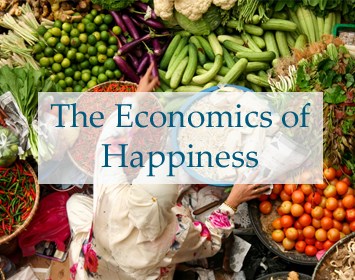Inauguration 2017 Special Coverage w/ Angela Davis, Naomi Klein, Ralph Nader & More
Menu

Special coverage in the Trump Era
From Public Citizen's Corporate Presidency site: "44 Trump administration officials have close ties to the Koch brothers and their network of political groups, particularly Vice President Mike Pence, White House Legislative Affairs Director Marc Short, EPA Administrator Scott Pruitt and White House budget director Mick Mulvaney."
Dark Money author Jane Mayer on The Dangers of President Pence, New Yorker, Oct. 23 issue on-line
Can Time Inc. Survive the Kochs? November 28, 2017 By Jane Mayer
..."This year, among the Kochs’ aims is to spend a projected four hundred million dollars in contributions from themselves and a small group of allied conservative donors they have assembled, to insure Republican victories in the 2018 midterm elections. Ordinarily, political reporters for Time magazine would chronicle this blatant attempt by the Kochs and their allies to buy political influence in the coming election cycle. Will they feel as free to do so now?"...
"Democracy in Chains: The Deep History of the Radical Right’s Stealth Plan for America" see: our site, and George Monbiot's essay on this key book by historian Nancy MacLean.
Full interview with The New Yorker’s Jane Mayer March 29, 2017, Democracy Now! about her article, "The Reclusive Hedge-Fund Tycoon Behind the Trump Presidency: How Robert Mercer Exploited America’s Populist Insurgency."
Democracy Now! Special Broadcast from the Women's March on Washington
The Economics of Happiness -- shorter version
Local Futures offers a free 19-minute abridged version of its award-winning documentary film The Economics of Happiness. It "brings us voices of hope of in a time of crisis." www.localfutures.org.
What's New?
July 31, 2011
"War and the True Tragedy of the Commons"
A world that wants to make peace with the environment cannot continue to fight wars or to sacrifice human health and the earth's ecosystems preparing for them."
-Michael Renner, "War and Public Health"
"The "Tragedy of the Commons," Garrett Hardin's 1968 controversial essay published in Science, essentially targeted overpopulation (read: poor women) as the prime threat to sustainable life on our finite earth. Hardin, and many who consumed this thesis, failed to single out the very small, but politically powerful, population responsible for a mammoth environmental impact - the military. Per capita, the military complex (read: powerful men) is the most polluting human population.
"A well-glued solidarity between the military, national security advisors, civilian defense contractors, and elites of government has cloaked the extraordinary debt of pollution, destruction of land, and use of finite resources in the paternalistic mantle of national security.
"Since the origins of recorded history, war chroniclers have told of tactical environmental destruction: destroying crops, forest, and infrastructure; polluting water supply and breaching dikes to flood enemy troops and fields; salting enemies' fields; catapulting infected blankets into enemy garrisons, and so on. During the American Civil War, a handful of Confederates attempted to burn down New York City and plotted both to poison the city's drinking water supply reservoir and to spread yellow fever throughout Washington, DC.[1] The Chinese government committed perhaps the single most destructive wartime act in history during Japan's 1937-1945 war against China. To deter the Japanese advance, the Chinese dynamited a dike near Chengchow, releasing impounded Yellow River water. Not only did the floodwaters drown the several thousand advancing Japanese soldiers, they also destroyed 4,000 villages, 11 cities, and several million hectares of farmland and killed several hundred thousand Chinese civilians.[2]
"War breeds environmental destruction, and just as war victims and war tactics have changed in recent times, so also has the scale of environmental destruction from war. The casualties of war in the late 20th and early 21st centuries have shifted from combatant soldiers to innocent civilians, with an estimated nine civilian deaths for every soldier death. The locus of war has moved from battlefields to urban and rural population centers, causing massive numbers of residents to flee and imminent health crises of contaminated water, poor sanitation, inadequate health care, malnourishment, overcrowding, and sexual predation in refugee camps. Nearly half of the world's refugees - 4.73 million Afghanis and Iraqis - are fleeing US-led wars and ensuing civil conflicts in their countries."...
Read full article here Truthout, 28 July 2011
 H. Patricia Hynes is a retired Professor of Environmental Health from Boston University School of Public Health and current Chair of the Board of the Traprock Center for Peace and Justice. She has written and edited 7 books, among them The Recurring Silent Spring. She writes and speaks on issues of war and militarism with an emphasis on women, environment, and public health.
H. Patricia Hynes is a retired Professor of Environmental Health from Boston University School of Public Health and current Chair of the Board of the Traprock Center for Peace and Justice. She has written and edited 7 books, among them The Recurring Silent Spring. She writes and speaks on issues of war and militarism with an emphasis on women, environment, and public health.
Source: Physicians for Social Responsibility
Posts
The Military Enterprise as Global Polluter, November 4, 2010
The Wolf in Zero Carbon Clothing, January 25, 2011

